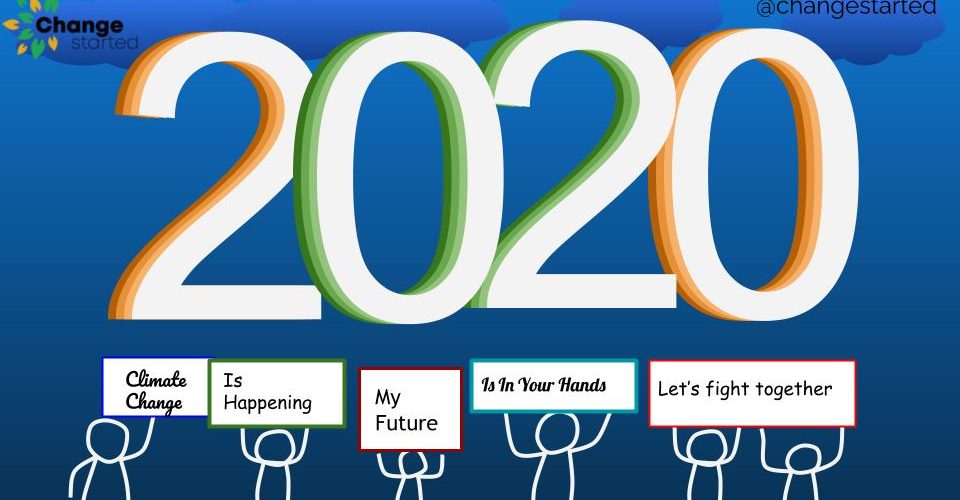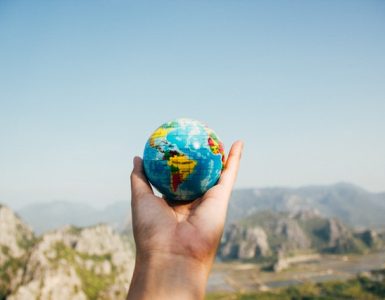What a year it was, 2020 will be forever etched in our memories and will be passed on to the next few generations, unless something even more dramatic happens.
While the world started hearing about some disease in some corner of China, no one really bothered in the first couple of months of the year. Then suddenly even before any of us could react, the virus engulfed the world, quite literally.
The jury is still out if this was man-made or nature-made, but the 2020 experience is going to shape our behavior at least for the next foreseeable future. Having said that, the virus was not the only havoc caused by nature.
The sheer number of natural disasters in 2020 also makes this year extremely unforgettable. As the year is drawing close, more and more reports & studies have indicated that this was an unprecedented year.
According to a report by charity Christian Aid, the financial impact of natural disasters in 2020 caused due to weather changes this year amounted to $150bn. Though most of these losses are uninsured, even then, as per Swiss Re, an insurance company, the total losses for the insurance industry in the year is $83 billion making the year the fifth costliest year since 1970.
According to the World Meteorological Organization, 2011-2020 is accredited with the warmest decade and 2020 remains on track to be one of the three warmest years on record.
“The average global temperature in 2020 is set to be about 1.2 °C above the pre-industrial (1850-1900) level.” – World Meteorological Organization
but let me start with some positives, when humans were in Lockdown, Nature was Joyous.
As the whole world got into lockdown, economic activity was brought to a standstill, people confined to their homes. The few weeks in April – May, brought glimpses of beautiful mother nature, that was hidden under the haze & dust.
Many parts of the world reported incidents of wildlife exploring the deserted streets,
Wild turkeys took their spot at a school playground in California, US; a coyote was spotted on the streets of San Francisco; deer were seen in a town in Poland; wild pigs reached the streets of Paris, France; and wild boars traveled to the roads of Barcelona, Spain. – The Print
In the Italian city Venice, which is always bustling with tourists especially the narrow water canals, the gondola boat ride is on every tourist itinerary. Suddenly with the boating stopped due to lockdown, people started to see Dolphins playing near the shores.
In India, the people of Jalandhar, a city in northern Indian state Punjab, suddenly woke up one morning to see the lovely Himalayas from their balcony & rooftop. The Dhauladhar mountain range, which is more than 100 miles away from the city – made a spectacular appearance for the inhabitants. Industrial pollution had blanketed the mountain from the view and suddenly after 30-35 years the veil was lifted and people could see the mountain.
A similar occurrence was noted in another Indian town, Saharanpur, where people were able to spot Gangotri mountains.
Rivers became clean, birds, marine life, wild animals were observed returning to their habitats. You can read more about it here.
In the midst of this, even jokes and memes started doing the rounds.
Dolphins have returned in Italy due to #COVIDー19
Meanwhile in Bermuda Triangle: pic.twitter.com/2alJckRgzP
— Uzair (@Notoseriously) April 9, 2020
Then Calamity strikes – List of Natual Disasters in 2020
Bushfires
In early January, Australia faced one of its biggest natural disasters in the form of bushfires. The forest fires destroyed millions of hectares of forest land, killed thousands of animals, and impacted hundreds of human lives.
While the wildfire was thankfully controlled in Australia, but it continued to burn the Amazon rain forest almost throughout the year. As per some estimates, there was more than a 10% increase in the number of fire incidents, causing huge devastation to the bio-diversity.
The most populous US state California suffered one of the major wildfires in the year, it burned more than 4 million acres, over twice the previous record for any year.
Cyclones – Rains and Floods
In May 2020, Cyclone Amphan devastated the eastern part of India and the Bangladesh region. The cyclone killed hundreds of people, caused massive destruction to houses & property, left many homeless. Cyclone Amphan is classified as one of the most powerful cyclones to ever impact the region.
If cyclones were not enough, throughout June, July, and August large parts of southern and central China, northeastern India, and Bangladesh continued to be inundated under floods.
As per Chinese estimates, over 60 million people in China have been afflicted in this year’s flood season. While in India, as per reports, the floods affected more than 5 million people, claiming the lives of over 120 people.
The cyclone “caused losses valued at $13 billion in just a few days. Other events unfolded over months, like floods in China and India, which had an estimated cost of $32 billion and $10 billion respectively.” – Christan Aid
Floods impacted a large part of Indonesia as well throughout the year, first in January & February, then again in September when the country’s capital Jakarta was hit. Then in July, flash floods and landslides killed at least 16 people on the island of Sulawesi.
“At least 60 people were killed and thousands were forced to flee homes early this year in the deadliest flooding to hit Jakarta in more than a decade during which floodwaters rose as high as a single-story house”- Bloomberg
Earthquakes
In January and again in October, a high magnitude earthquake hit Turkey, killing more than 100 people and injuring more than a thousand people.
The Caribbean islands were hit by one of the largest earthquakes of the year, measuring 7.7 magnitudes, thankfully it did not cost any lives. Other earthquakes that were reported were from the coast of Alaska (7.8 magnitudes), Oaxaca in Mexico (7.4 magnitudes).
As I write this article, a major earthquake shattered central European countries Slovenia and Croatia. The last strong earthquake which took place in the region was in 1994.
Heatwave
If there is any misapprehension that Climate Change impacts only the developing & underdeveloped parts of the world, let us bring some stories from highly developed & evolved European countries.
What started in 2003, over the past few years, many European countries have witnessed a series of high temperatures. According to the Copernicus European State of the Climate Report, 2019 was Europe’s warmest year on record, 11 of the continent’s 12 warmest years have occurred since 2000, and seem to have killed, around 140,00 people
2020, was not far behind, the extreme heatwave was observed in France, Germany, UK, Spain, Italy, and others throughout the summer months.
Draughts
If floods inundated one part of the world, another part of the world faced severe droughts. California state which was considered as a leader in USA Agricultural production was hit by negligible rainfall and extremely high temperatures throughout summers.
Many countries in South America also experienced extended spells of the dry period in northern Argentina, Paraguay, and western areas of Brazil.
and many more…
If you think this is enough, locust swarms in India and Central Asia, the volcanic eruption in the Philippines & Indonesia, ice melting in Greenland and many others are on the list.
If you are interested to investigate further, here are a couple of specific monthly reports which were published –
Conclusion – Climate Change has to be solved
Climate change is not a country’s problem, it is not specific to any city or community. As we could see, climate change is on a relentless march and it continues to impact each one of us.
Reflecting on 2020 one feels that COVID-19 was a lesson on life, that combined many learnings in one i.e. the fragility of life & uncertainty of future, and above all, the supreme power of nature, which is reflected in an unusually high number of natural disasters in 2020.
These natural disasters only indicate the constant damage that we have inflicted on the planet & the environment. Recently Amitabh Bachan in the TV game show Kaun Banega Crorepati anecdotally compared the environmental damage to a body injury. An injury which by constant scratching has aggravated so much that shortly the limb will be amputated.
As I introduced in the article, though this year will be an unforgettable one, unless something dramatic happens, that dramatic event could be another calamity caused due to climate change. If we do not want that to happen, we as humans need to work together, leave our environmentally damaging idiosyncrasies and fight it together.







Add comment